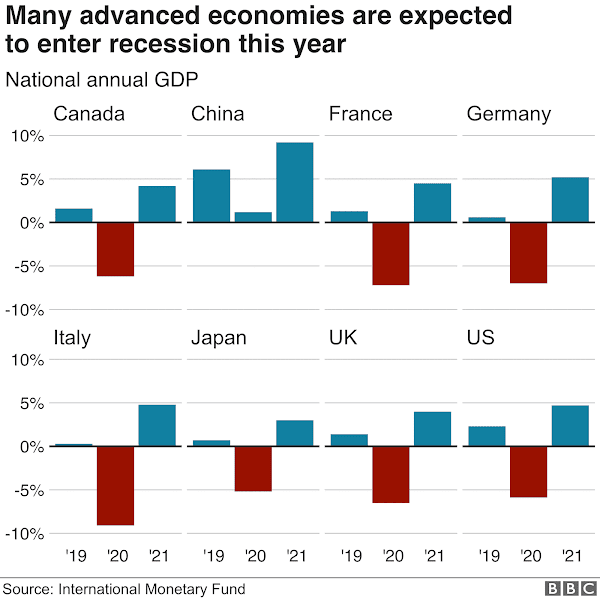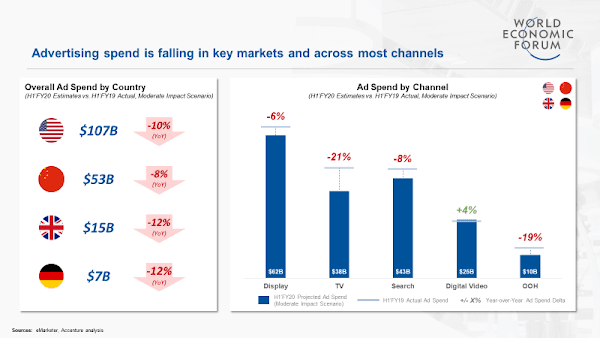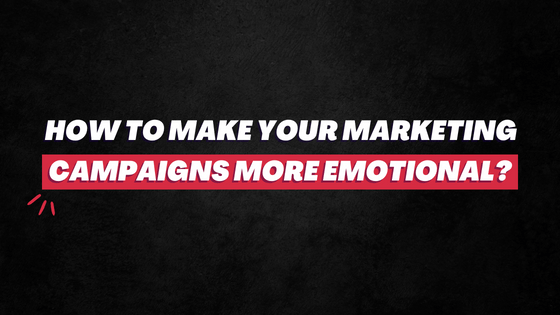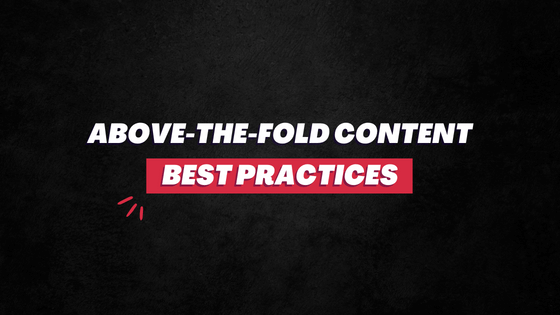The customers don’t have the money to buy products.
That’s a difficult position to be in for any small and medium-sized enterprise.
But then that’s the reality. We are in recession – a long-overdue economic contraction that’s triggered by COVID-19.

(Source)
During the Great Recession from 2007 to 2009 – many businesses died, millions of people ended up unemployed, and those companies that survived survived with great damage that took years to recover.
We might repeat something similar this time, or worse.
As a small or medium-sized business owner, you must brace yourself up.
Preparing Thyself Like a Spartan
Of course, how bad would this recession be for your business depends on countless factors – including, and most importantly, the industry you’re in.
For instance, the travel and tourism industry will likely take the biggest hit. Due to this pandemic alone, there could be a global loss of 75 million jobs and $2.1 trillion in revenue.
But for businesses in healthcare or utilities, barring some hiccups, they would have a decent ride ahead.
Overall though, this recession would threaten your business, hurt its growth, and leave a deep wound that’s going to take some time to heal.
So, you must prepare yourself.
Prepare, how?
By taking adequate measures to cushion your business against economic impact – and positioning it well to survive and then thrive.
This is where digital marketing comes in!
Understand the Process
Unless you’re in an industry that is deemed safer during such downturns, you will have to wait for the economy to improve to get your business back on track.
But that doesn’t mean you should sit hand-on-hand, inactive, letting your business go in ruins.
You might end up waiting for 334 days – that’s the average span a recession lasts.
The action plan is simple:
- Do things for the survival of your business
- Position yourself in a way so that when the economy is getting better, the recovery for your business is exponentially faster.
This requires you to have a kickass digital marketing strategy. And that’s what this post will help you with.
Note: At the bottom half of this post, I also talk about 2 effective ways how you can ensure consistent cash flow for your business even during this recession. After all, you run a business that needs money. It can’t survive for tomorrow if it isn’t making the necessary amount of money today.
The Challenges With Digital Marketing
A lot of people don’t have money to buy…
You don’t have enough money to spare on digital marketing…
The solutions to these problems are pretty straightforward.
One, since a lot of people don’t have money to buy, don’t be 100 percent sales-driven aka do not sell obsessively.
Two, since you don’t have enough money to spare on digital marketing, optimize your existing strategies to minimize the spending and maximize the returns.
Of course, these solutions are straightforward – but not easy to pull.
Let me explain how you can execute these digital marketing solutions to keep your business afloat during this economic downturn.
1. Change Your Existing Strategy
Time has changed – and so should your strategy.
You cannot work with the same pre-covid19 plans and approach when you and your customers are facing a new normal.
So, you need to shake up your existing digital marketing strategies to incorporate the needs and challenges of today, as well as the shifting consumer behavior during the recession.
Re-think your entire strategy.
2. Audit Your Digital Marketing Spending
This isn’t the time when you can let go of small financial leaks.
You cannot afford the unnecessary expenses.
Those measures that aren’t yielding enough ROI must be done away with.
Audit your existing digital marketing strategy. Minimize the costs and optimize your spending.
This is the time to act frugally and work with a CFO-esque mindset.
Even small cost cuts in your digital marketing can make a big difference for your business.
Moreover, auditing your marketing spending isn’t necessarily intended to save you money. It’s about channeling your resources to avenues that are delivering higher ROI.
3. Make It Brand-Centric
Do not focus on selling.
Your customers’ purchasing power has likely taken a hit. So, put your “buy now” sales broadcasts to rest for now.
Shift the gear to brand building.
This is the time to position your brand strongly; to improve its recognition, trust, and retention value.
Your marketing communication and overall strategy should be integrated with a well-devised branding strategy.
Building a good brand value will not bring immediate financial rewards. (In fact, building brand costs money). But it will significantly multiply your returns in the long run and add sustainability to your business.
4. Create More Content (Create More Content)
You should be publishing more content for your business anyway.
Gone are the days when “quality over quantity” was relevant. Today, you need both quality and quantity.
The more content you produce (across all relevant platforms), the more opportunities you will discover to scale your business.
So, create valuable content at scale.
Besides, that’s the fundamental requirement to build a valuable brand; it’s also needed in effective crisis communication.
Recommended Read: How to Create Content Fast (Without Hurting Quality)
5. Put Efforts to Build a Community
A community that remains loyal…
A community that responds unfailingly and promptly to your call-to-actions…
These are the people who will be your biggest support when your business is finally ready to thrive once the economy starts getting back on track.
Build one such community.
Build an emotional connection between your brand and your target audience on the back of resourcefulness, empathy, utility, and respect.
Remember, you don’t need hundreds of thousands of people in your community. Say, if you have a thousand fans, even a community of 50 responsive people will bring you plenty of benefits.
6. Build (And Grow) An Email List
There are numerous benefits to building an email list. And this stays true irrespective of the industry you’re in and the kind of business you have.
Connecting to the previous points… An email list is key to building brand and community.
Its personalized touch makes it relatively simpler to connect with the audience and create an emotional bond.
Having a large and responsive email list empowers you to drive the desired action in a quicker span. (The ROI increases if you’re good at segmentation and automation.)
So, when the economy is really getting back on track and your consumers’ purchasing power has improved, you can (smartly) use your email list to drive financial outcomes.
Recommended Read: Ultimate Email Marketing Guide 2020 (Beginners + Advanced)
7. Tap On Cheaper Ads
Ad rates have fallen on a few platforms.
And as long as business owners refrain from (or go slow with) advertising spending, the rates will stay low. Or at least their growth would remain slow.

This is a great opportunity to tap into underpriced attention.
Invest in ads on relevant channels and get returns at a relatively low cost.
8. Prioritize What’s Working For You Right Now
This isn’t necessarily a great time to spend your money on A/B testing. Pause your experiments and split tests for the time being.
Instead, focus on what’s working for you right now.
Go through your data and find out which platform, what kind of content, what type of CTA, and more are working in your business’s favor.
And then prioritize them above others.
9. Accommodate Little Changes on the Website
Shake a few things on your website to address the needs and challenges of now.
For instance, promote your brand on the site more prominently.
Change your call to action.
Change your testimonials or highlighted reviews; make them more topical. Change them to show what your customers or clients are saying about your product during this recession. (This will show that despite economic challenges, people are purchasing your product and are appreciating it.)
In short, audit your website and figure out how to make it more relevant to your new marketing, as well as a business strategy during recession.
10. Be More Visible (and Louder) Online
This is as straightforward as it gets.
The more visible and louder you are online, the more opportunities you will discover to drive engagement and conversion.
So, amp your efforts to get stronger online. Use this period of economic downturn to add to your digital prowess.
11. Don’t Waste Too Much Time
Nobody knows how long this economic contraction will last.
While V-shape recovery is possible, it’s unlikely to happen. Market pundits believe this might be a sustained slump that lasts longer.
In any case though, there’s not too much time for you.
This is an opportunity for business owners to fix their strategies, re-align their paths, and prepare to be more efficient.
Tap on the opportunity quickly.
The first movers will always enjoy greater rewards.
Don’t wait. Don’t think too much. Don’t become a victim of paralysis analysis. Don’t waste your time.
Whatever refinement your digital marketing strategy needs – decide, plan, and execute. Execute fast!
Recommended Read: 37 Practical Productivity Tips for Bloggers with Full-Time Job
12. Look at the New KPIs
The sales rate isn’t the most important metric right now.
Owing to the ongoing challenges, you need to focus on the newer Key Performance Indicators for the time being.
So, based on your refined digital marketing strategy, opt for newer primary and secondary KPIs that are more relevant.
Re-aligning your focus aka immediate digital marketing goal will help you better track your progress and stay on the right course.
Your Business Needs Cashflow
With the above points made…
You’re running a business.
It needs money. It needs cash flow…
To pay salaries, to pay rent, and subscriptions, to survive.
So, it makes sense to wonder how to increase sales during the recession. After all, you can depend on your cash reserve for only so much.
Here’s how your business can continue generating more revenue even in this recession:
Go After the ‘Low-Hanging Fruits’
There are a few consumer segments that are easier to sell to.
People who are a part of your core target audience…
People who are already your customers/clients…
People who have high LTV or Lifetime Value for your business…
People who are still buying from you…
You want to focus more on these people.
When you’re creating your new digital marketing strategy and goals, these are the people who should be at the top of the priority. Because they are easier to convert.
Of course, you need a better pitch, a targeted message, and the right approach. But in relative terms, such segments will bring you better ROI.
Push for the ‘Cash Cows’ Harder
‘Cash cows’ are products that bring you the highest revenue.
Push those products (or categories) that are your USP or specialization… products that are selling high even in the ongoing situation.
For instance, if you’re an agency that specializes in web development, focus on web development and not on add-on services like SEO and SMO.
Or, say, if you run a restaurant that’s more popular for cheese sandwiches, you want to focus a lot more on cheese sandwiches than other items on the menu, like sushi.
First, in many ways, this will help you cut costs from/of the low-return value propositions.
Second, if you were spending 10 on ‘cash cows’ and getting revenue of 20, you should now invest 20 of them and get a revenue of 40.
This isn’t just about playing on your strength. It’s also about doubling down on that strength.
So, figure out what’s your ‘cash cow’.
Note, I am not saying that you should ignore other products in your catalog. It simply means you want to heed more to items that are bringing you higher cash flow in these tough times.
Keep Calm and Hang In There
If your industry is among the ones that are hit the hardest if your business is struggling…
This isn’t the time to make the most money. This isn’t the time to obsess about making profits.
This is the time – a critical phase – that you should focus on surviving.
How you can survive?
How you can use this phase to position your business as strongly as possible?
How you can build a groundwork for your business to have it fly high when the economy starts getting back on track?
These are key questions to consider right now.
The above-mentioned pointers cover these questions in different capacities.
Admittedly, it’s not going to be easy to execute all that I have mentioned above. When your business isn’t making enough money, it’s tough to hold your nerves.
But it’s essential that you keep calm and hang in there. You must have a constructive and systematic approach to the ongoing challenges. You must have the heart to persist through this storm. I know less about entrepreneurship, but isn’t that what a true entrepreneur should do at this time?!!!
If you follow the above-mentioned digital marketing tips, I am uncomfortably confident you’re going to survive and even flourish during and after this critical phase. Take the necessary actions and it will work. Period.
Here’s a Quick Checklist
- Change Your Existing Digital Marketing Strategy
- Audit Your Digital Marketing Spending
- Make Your Digital Marketing Strategy Brand-Centric
- Create More Content (Create More Content)
- Put Efforts into Building a (Responsive) Community
- Build (And Grow) An Email List
- Tap On Low-Cost Ad Opportunities
- Prioritize What’s Working For You Right Now
- Accommodate Little Changes on the Website
- Be More Visible (and Louder) Online
- Don’t Waste Too Much Time; Execute Faster
- Look at the New Key Performance Indicators
- Go After the ‘Low-Hanging Fruits’
- Push for the ‘Cash Cows’ Harder
Need Help?
Have a question?
Need some help with your digital marketing?
Shoot me an email. I would love to help!
Also, I promise, I won’t try to sell you anything. 🙂


